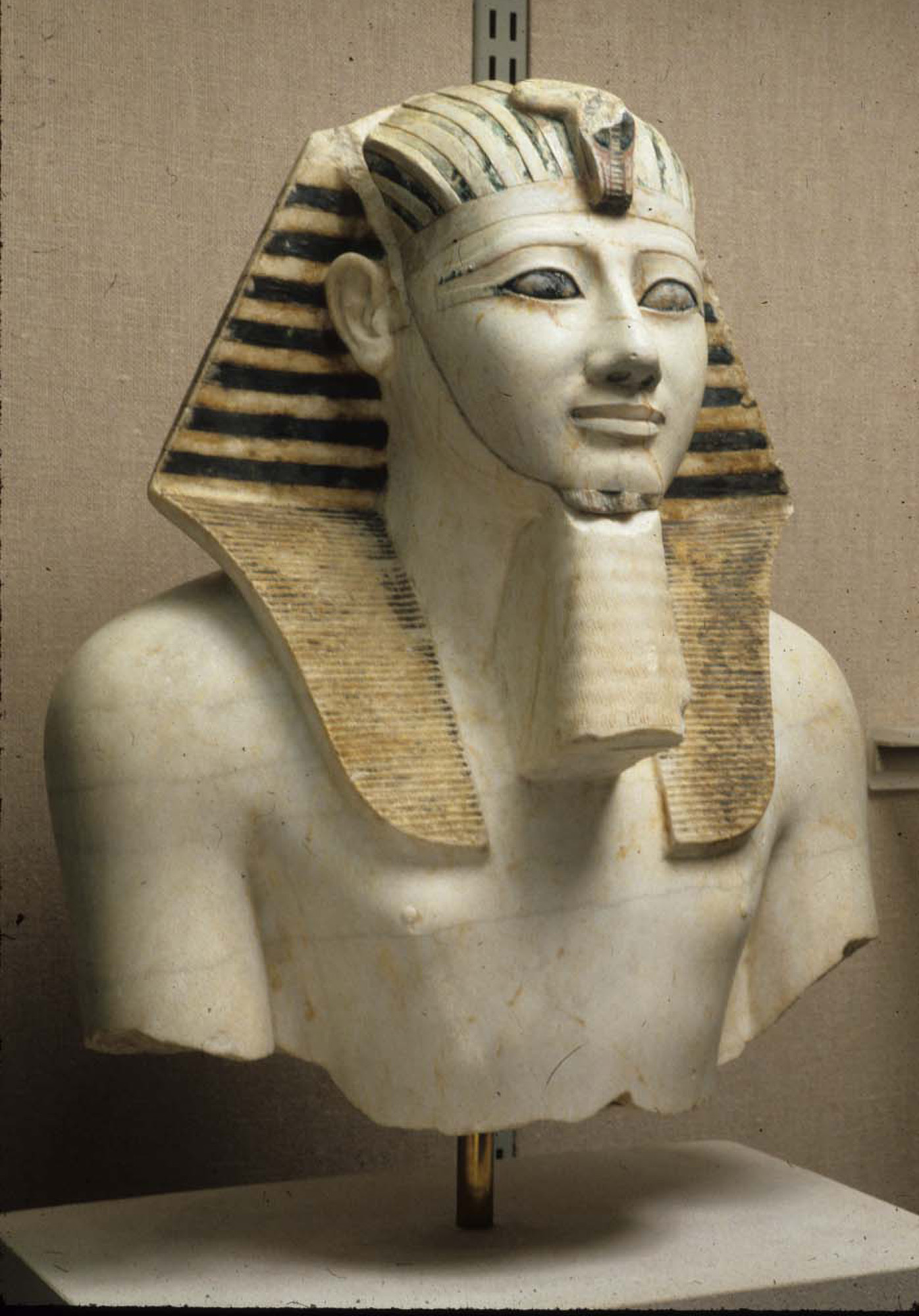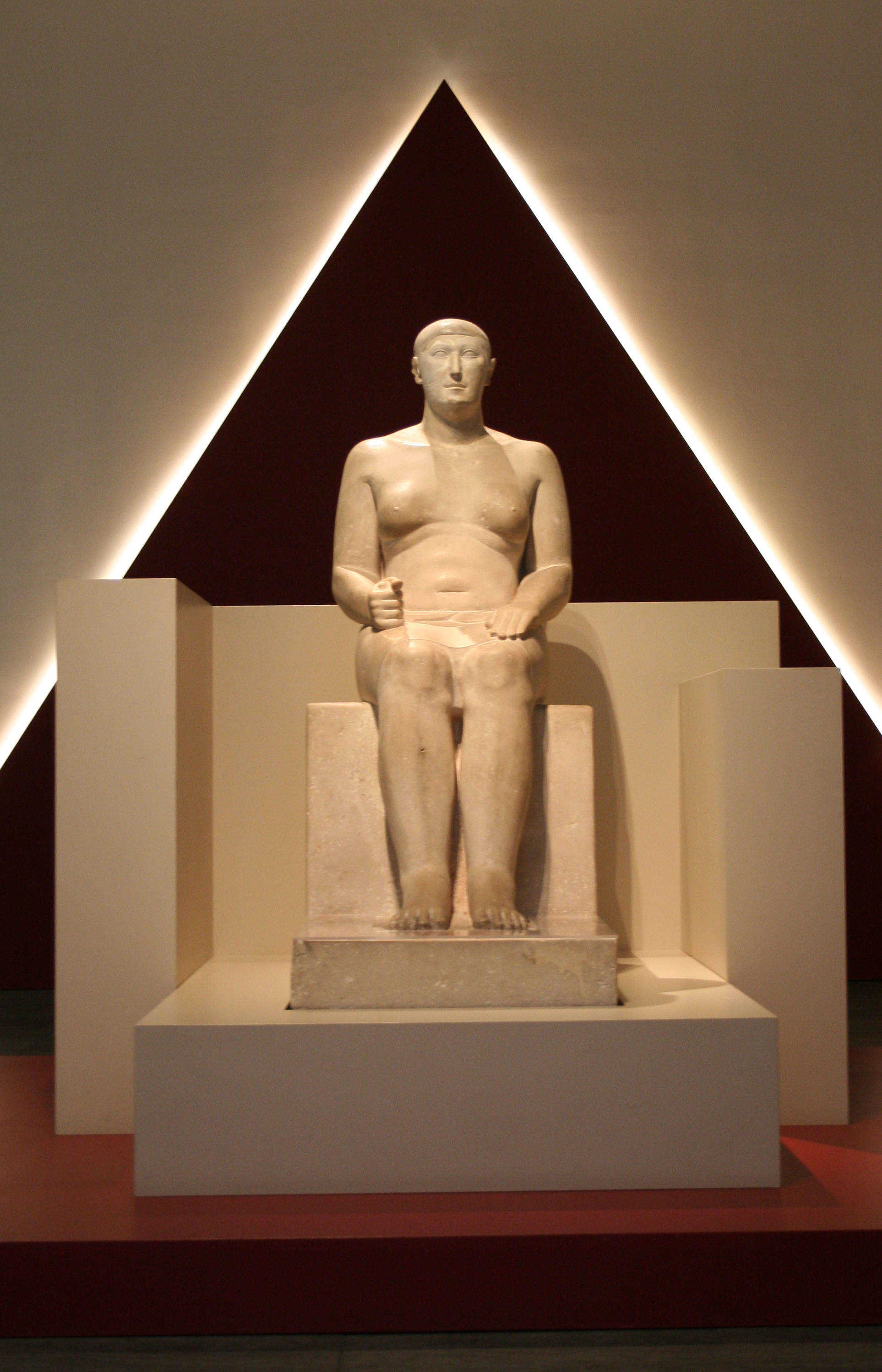|
Litany Of Re
The Litany of Re (or more fully "''Book of Praying to Re in the West, Praying to the United One in the West''") is an important ancient Egyptian funerary text of the New Kingdom.Hornung (1999) p.136 Like many funerary texts, it was written on the inside of the tomb for reference by the deceased. Unlike other funerary texts, however, it was reserved only for pharaohs or very favored nobility. It is a two-part composition that in the first part invokes the sun, Ra, in 75 different forms. The second part is a series of prayers in which the pharaoh assumes parts of nature and deities, but mostly of the sun god. Developed in the Eighteenth Dynasty, it also praises the king for his union with the sun god, as well as other deities. The text was used in the entrance of most tombs from the time of Seti I, though we first know of it from the burial chamber of Thutmose III and the tomb of his vizier A vizier (; ar, وزير, wazīr; fa, وزیر, vazīr), or wazir, is a high-rank ... [...More Info...] [...Related Items...] OR: [Wikipedia] [Google] [Baidu] |
Funerary Text
Funerary texts or funerary literature feature in many belief systems. Its purpose is usually to provide guidance to the newly deceased or the soon-to-be-deceased about how to survive and prosper in the afterlife. Antiquity The most famous example of funerary literature is that of the ancient Egyptians, whose ''Book of the Dead'' was buried with the deceased to guide him or her through the various trials that would be encountered before being allowed into the afterlife. The ''Book of the Dead'' followed a tradition of Egyptian funerary literature that dated back as far as the 26th century BC. Similar practices were followed by followers of the cult of Orpheus, who lived in southern Italy and Crete in the 6th–1st century BC. Their dead were buried with gold plates or laminae on which were inscribed directions about the afterlife. In Mandaeism, the ''Left Ginza'' and parts of the ''Qolasta'' serve as funerary texts. Medieval Tibetan Buddhists still make use of the ''Bardo T ... [...More Info...] [...Related Items...] OR: [Wikipedia] [Google] [Baidu] |
New Kingdom Of Egypt
The New Kingdom, also referred to as the Egyptian Empire, is the period in ancient Egyptian history between the sixteenth century BC and the eleventh century BC, covering the Eighteenth, Nineteenth, and Twentieth dynasties of Egypt. Radiocarbon dating places the beginning of the New Kingdom between 1570 BC and 1544 BC. The New Kingdom followed the Second Intermediate Period and was succeeded by the Third Intermediate Period. It was Egypt's most prosperous time and marked the peak of its power. The concept of a "New Kingdom" as one of three "golden ages" was coined in 1845 by German Egyptologist Baron von Bunsen, and its definition would evolve significantly throughout the nineteenth and twentieth centuries. The later part of this period, under the Nineteenth and Twentieth dynasties (1292–1069 BC), is also known as the ''Ramesside period''. It is named after the eleven pharaohs who took the name Ramesses, after Ramesses I, the founder of the Nineteenth Dynasty. Possibly ... [...More Info...] [...Related Items...] OR: [Wikipedia] [Google] [Baidu] |
Pharaoh
Pharaoh (, ; Egyptian: ''pr ꜥꜣ''; cop, , Pǝrro; Biblical Hebrew: ''Parʿō'') is the vernacular term often used by modern authors for the kings of ancient Egypt who ruled as monarchs from the First Dynasty (c. 3150 BC) until the annexation of Egypt by the Roman Empire in 30 BC. However, regardless of gender, "king" was the term used most frequently by the ancient Egyptians for their monarchs through the middle of the Eighteenth Dynasty during the New Kingdom. The term "pharaoh" was not used contemporaneously for a ruler until a possible reference to Merneptah, c. 1210 BC during the Nineteenth Dynasty, nor consistently used until the decline and instability that began with the Twenty-Fifth Dynasty. In the early dynasties, ancient Egyptian kings had as many as three titles: the Horus, the Sedge and Bee ( ''nswt-bjtj''), and the Two Ladies or Nebty ( ''nbtj'') name. The Golden Horus and the nomen and prenomen titles were added later. In Egyptian society, religio ... [...More Info...] [...Related Items...] OR: [Wikipedia] [Google] [Baidu] |
Nobility
Nobility is a social class found in many societies that have an aristocracy (class), aristocracy. It is normally ranked immediately below Royal family, royalty. Nobility has often been an Estates of the realm, estate of the realm with many exclusive functions and characteristics. The characteristics associated with nobility may constitute substantial advantages over or relative to non-nobles or simply formal functions (e.g., Order of precedence, precedence), and vary by country and by era. Membership in the nobility, including rights and responsibilities, is typically Hereditary title, hereditary and Patrilinearity, patrilineal. Membership in the nobility has historically been granted by a monarch or government, and acquisition of sufficient power, wealth, ownerships, or royal favour has occasionally enabled commoners to ascend into the nobility. There are often a variety of ranks within the noble class. Legal recognition of nobility has been much more common in monarchies, ... [...More Info...] [...Related Items...] OR: [Wikipedia] [Google] [Baidu] |
Ancient Egyptian Deities
Ancient Egyptian deities are the God (male deity), gods and goddesses worshipped in ancient Egypt. The beliefs and rituals surrounding these gods formed the core of ancient Egyptian religion, which emerged sometime in prehistoric Egypt, prehistory. Deities represented natural phenomenon, natural forces and phenomena, and the Egyptians supported and appeased them through sacrifice, offerings and rituals so that these forces would continue to function according to ''maat'', or divine order. After the founding of the Egyptian state around 3100 BC, the authority to perform these tasks was controlled by the pharaoh, who claimed to be the gods' representative and managed the Egyptian temple, temples where the rituals were carried out. The gods' complex characteristics were expressed in Egyptian mythology, myths and in intricate relationships between deities: family ties, loose groups and hierarchies, and combinations of separate gods into one. Deities' diverse appearances in art ... [...More Info...] [...Related Items...] OR: [Wikipedia] [Google] [Baidu] |
Seti I
Menmaatre Seti I (or Sethos I in Greek) was the second pharaoh of the Nineteenth Dynasty of Egypt during the New Kingdom period, ruling c.1294 or 1290 BC to 1279 BC. He was the son of Ramesses I and Sitre, and the father of Ramesses II. The name 'Seti' means "of Set", which indicates that he was consecrated to the god Set (also termed "Sutekh" or "Seth"). As with most pharaohs, Seti had several names. Upon his ascension, he took the prenomen "mn-m3't-r' ", usually vocalized in Egyptian as ''Menmaatre (''Established is the Justice of Re). His better known nomen, or birth name, is transliterated as "''sty mry-n-ptḥ"'' or ''Sety Merenptah'', meaning "Man of Set, beloved of Ptah". Manetho incorrectly considered him to be the founder of the 19th Dynasty, and gave him a reign length of 55 years, though no evidence has ever been found for so long a reign. Reign After the enormous social upheavals generated by Akhenaten's religious reform, Horemheb, Ramesses I and Seti I's ... [...More Info...] [...Related Items...] OR: [Wikipedia] [Google] [Baidu] |
KV34
Tomb KV34 ( ar, مقبرة تحتمس الثالث, Maqbarat Tahtamis al-Thaalithi) in the Valley of the Kings (near the modern-day Egyptian city of Luxor) was the tomb of 18th Dynasty Pharaoh Thutmose III. One of the first tombs to be dug in the Valley, it was cut high in the cliff face of the furthermost ''wadi''. A steep corridor leads down, in a dog-leg shape, from the entrance past a deep well to a trapezoidal antechamber. Beyond the antechamber lies the cartouche-shaped burial chamber, off which stand four smaller side chambers. The stone sarcophagus in which Thutmose's body was placed is still in place in the burial chamber, albeit damaged by tomb robbers. Many of the wall decorations are in an unusual style not found elsewhere in the Valley of the Kings. On a yellow-tinged background (intended to resemble aged papyrus), the earliest known version of the ''Amduat'' is traced, depicting the ancient Egyptian deities as simple (almost naive) stick figures, in papyrus writing s ... [...More Info...] [...Related Items...] OR: [Wikipedia] [Google] [Baidu] |
Thutmose III
Thutmose III (variously also spelt Tuthmosis or Thothmes), sometimes called Thutmose the Great, was the sixth pharaoh of the Eighteenth Dynasty. Officially, Thutmose III ruled Egypt for almost 54 years and his reign is usually dated from 28 April 1479 BC to 11 March 1425 BC, from the age of two and until his death at age fifty-six; however, during the first 22 years of his reign, he was coregent with his stepmother and aunt, Hatshepsut, who was named the pharaoh. While he was shown first on surviving monuments, both were assigned the usual royal names and insignia and neither is given any obvious seniority over the other. Thutmose served as the head of Hatshepsut's armies. During the final two years of his reign, he appointed his son and successor, Amenhotep II, as his junior co-regent. His firstborn son and heir to the throne, Amenemhat, predeceased Thutmose III. He would become one of the most powerful pharaohs of the 18th dynasty. Becoming the sole ruling pharaoh of the ... [...More Info...] [...Related Items...] OR: [Wikipedia] [Google] [Baidu] |
TT131
The Theban Tomb TT131 is located in Sheikh Abd el-Qurna. It forms part of the Theban Necropolis, situated on the west bank of the Nile opposite Luxor. The tomb belongs to an 18th dynasty Ancient Egyptian named Useramen who was a Vizier during the reigns of Hatshepsut and Thutmosis III.Hatshepsut by Anneke Bart The aged Vizier Amethu (User's father) is shown with a chamberlain, courtiers and User as a scribe before Tuthmosis III, and a text records the installation of User as co-vizier.Porter,B. and Moss R.L.B., Topographical Bibliography of Ancient Egyptian Hieroglyphic Texts, Reliefs and Paintings: The Theban Necropolis, Part One: Private Tombs. Second Edition. Griffith Institute. Oxford. 1994 See also * |
Vizier (Ancient Egypt)
The vizier () was the highest official in ancient Egypt to serve the pharaoh (king) during the Old, Middle, and New Kingdoms. Vizier is the generally accepted rendering of ancient Egyptian , etc., among Egyptologists. The ''Instruction of Rekhmire'' (''Installation of the Vizier''), a New Kingdom text, defines many of the duties of the , and lays down codes of behavior. The viziers were often appointed by the pharaoh. During the 4th Dynasty and early 5th Dynasty, viziers were exclusively drawn from the royal family; from the period around the reign of Neferirkare Kakai onwards, they were chosen according to loyalty and talent or inherited the position from their fathers. Responsibilities The viziers were appointed by the pharaohs and often belonged to a pharaoh's family. The vizier's paramount duty was to supervise the running of the country, much like a prime minister. At times this included small details such as sampling the city's water supply. All other lesser supervis ... [...More Info...] [...Related Items...] OR: [Wikipedia] [Google] [Baidu] |





